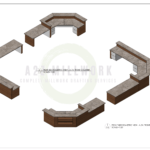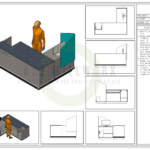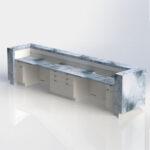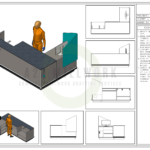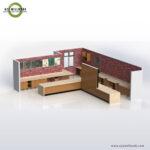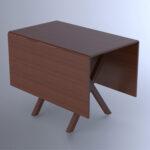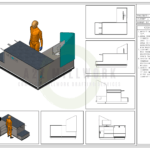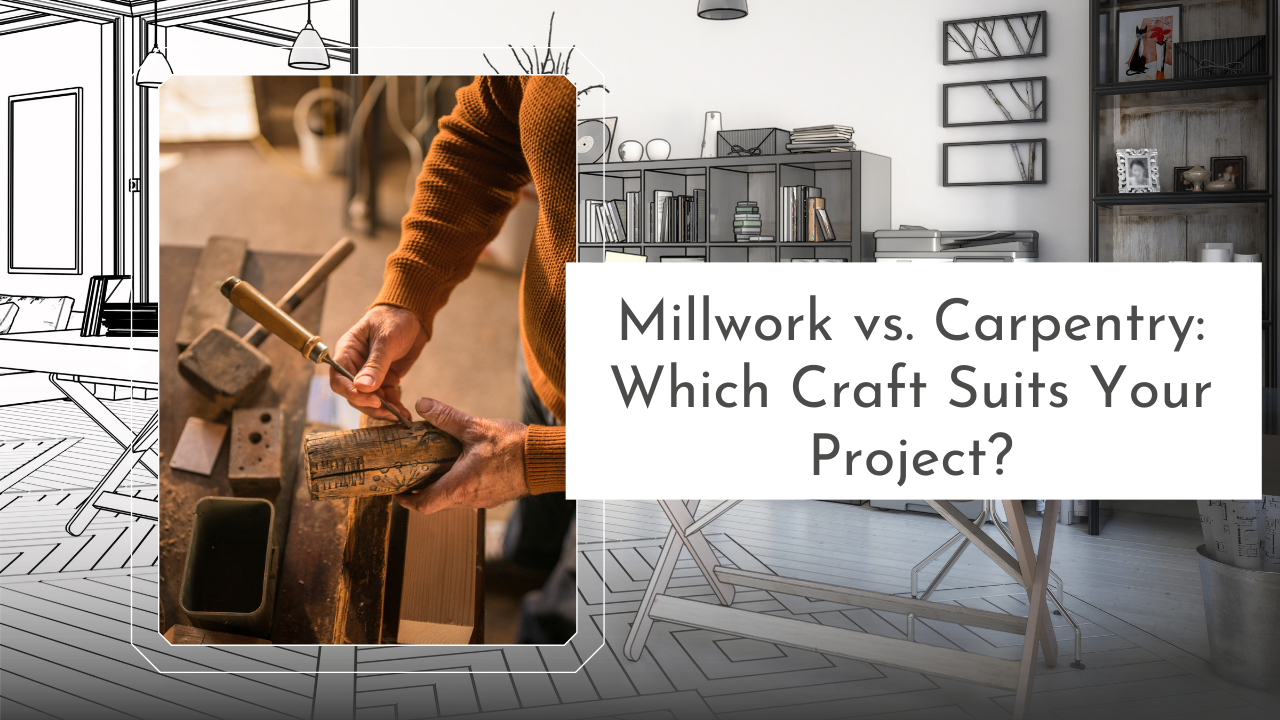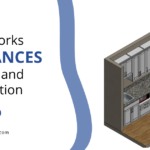When it comes to designing and constructing interiors, the terms millwork and carpentry often arise. Though the two fields overlap, they cater to distinct aspects of craftsmanship. If you’re undertaking a renovation or custom project, understanding the key differences is essential to making informed decisions. In this article, we’ll break down the scope of millwork and carpentry, the types of projects they suit, and factors to consider when selecting the right craft for your project.
Additionally, we’ll explore how choosing the right service can reduce risks and enhance project outcomes—especially in the U.S. market, where custom craftsmanship is in high demand.
What is Millwork?
Millwork refers to custom-built architectural wood products that are manufactured in a mill. These include doors, cabinets, moldings, trims, and other decorative or functional wood elements used within a building. Millwork components are pre-fabricated off-site to ensure precision, and they often require advanced machinery and software, such as Cabinet Vision and Microvellum.
Key Millwork Elements
- Custom cabinetry
- Crown molding and trims
- Doors, windows, and paneling
- Staircases and balustrades
Millwork products are typically finished and assembled on-site, and they contribute heavily to the aesthetic appeal of interiors. The focus is not only on durability but also on design and precision.
When to Choose Millwork:
- High-end residential projects: Custom cabinetry, built-ins, and intricate molding details.
- Commercial spaces: Custom reception desks or wall paneling.
- Architectural renovations: Restoring or replicating period-specific millwork for historical projects.
What is Carpentry?
Carpentry, on the other hand, encompasses structural woodwork performed directly on-site. Carpenters focus on the framework, flooring, framing, and roofing of a building. This field is more labor-intensive, requiring cutting, installing, and assembling materials at the project location.
Types of Carpentry:
- Rough Carpentry: Structural framing, including walls, floors, and roofs.
- Finish Carpentry: Installing moldings, window casings, and baseboards after the main structure is complete.
Carpentry is focused on construction stability and functional assembly. Unlike millwork, which is more detailed and design-driven, carpentry ensures that the project is structurally sound.
When to Choose Carpentry:
- Home framing or renovations: Building walls, floors, and roofs.
- Installations: Laying floors or setting up wood paneling.
- Repairs: Fixing doors, windows, or wooden frameworks.
Choosing the Right Craft for Your Project
Knowing whether to hire a millwork provider or carpenter depends on the project’s scope, design requirements, and budget. Below are some factors to consider when making this choice.
1. Project Complexity
If your project involves highly detailed, custom woodwork—such as custom kitchen cabinetry or decorative molding—millwork is the right choice. Millworkers can provide shop drawings that align with architectural plans, ensuring precision in design and functionality.
On the other hand, for more structural or framework-oriented tasks, carpentry is better suited. Whether you’re building a deck or adding extra rooms to your home, a carpenter will manage the structural aspects efficiently.
2. Design Precision vs. Structural Stability
Millwork excels at providing fine-tuned designs that add character to spaces. Custom cabinetry and detailed trims require precision that is best achieved through shop drawings and off-site manufacturing.
Carpentry, however, focuses on durability and stability. If your project requires framing, flooring, or installation of roof structures, a carpenter will provide the necessary expertise to ensure that the building is structurally sound.
3. Use of Technology
Millwork often utilizes advanced software like Microvellum and Cabinet Vision to create detailed shop drawings that enhance efficiency and reduce errors during installation. These tools allow for precise modeling, which ensures that every component fits seamlessly.
Carpentry relies more on traditional tools and hands-on skills, with fewer technological interventions. On-site adjustments are common in carpentry, whereas millwork relies on pre-planned shop drawings that minimize changes during installation.
4. Budget and Timeline
Millwork projects tend to be more expensive due to the level of customization and the use of specialized software. The turnaround time may also be longer, as the components are manufactured off-site.
Carpentry, being less detail-oriented, can often be completed on-site in a shorter time frame and at a lower cost. It is ideal for homeowners working with limited budgets or tight deadlines.
Millwork and Carpentry Working Together
In many projects, millwork and carpentry complement each other. For example, a high-end kitchen renovation might require custom cabinetry from a millwork provider, while a carpenter is needed to install the cabinetry and ensure it fits perfectly within the space.
This synergy ensures that the final product is both structurally sound and visually appealing. Collaborating with experienced millworkers and carpenters ensures the project meets both design and construction goals.
Benefits of Millwork Shop Drawings
For millwork projects, shop drawings are invaluable. These detailed drawings provide a clear plan for installation, reducing errors and saving time.
How Millwork Shop Drawings Help:
- Improved Accuracy: Precise measurements and materials are outlined.
- Enhanced Communication: Clear instructions help align designers, architects, and installers.
- Risk Reduction: Avoid costly mistakes during the installation phase.
A2Z Millwork Design LLC specializes in creating millwork shop drawings that help streamline complex projects and improve outcomes for clients across the U.S.
Conclusion: Finding the Right Craft for Your Needs
In summary, the choice between millwork and carpentry comes down to your project’s specific requirements. If your focus is on custom design elements and aesthetic value, millwork is the right choice. For structural stability and installations, carpentry offers the necessary expertise.
By selecting the right craft—or a combination of both—you can ensure a successful project that meets both functional and design goals.
At A2Z Millwork Design LLC, we provide Millwork Drafting Services and custom shop drawings tailored to meet the needs of homeowners, architects, and builders across the U.S. Our expertise ensures that every detail is executed flawlessly, delivering exceptional craftsmanship for every project.



